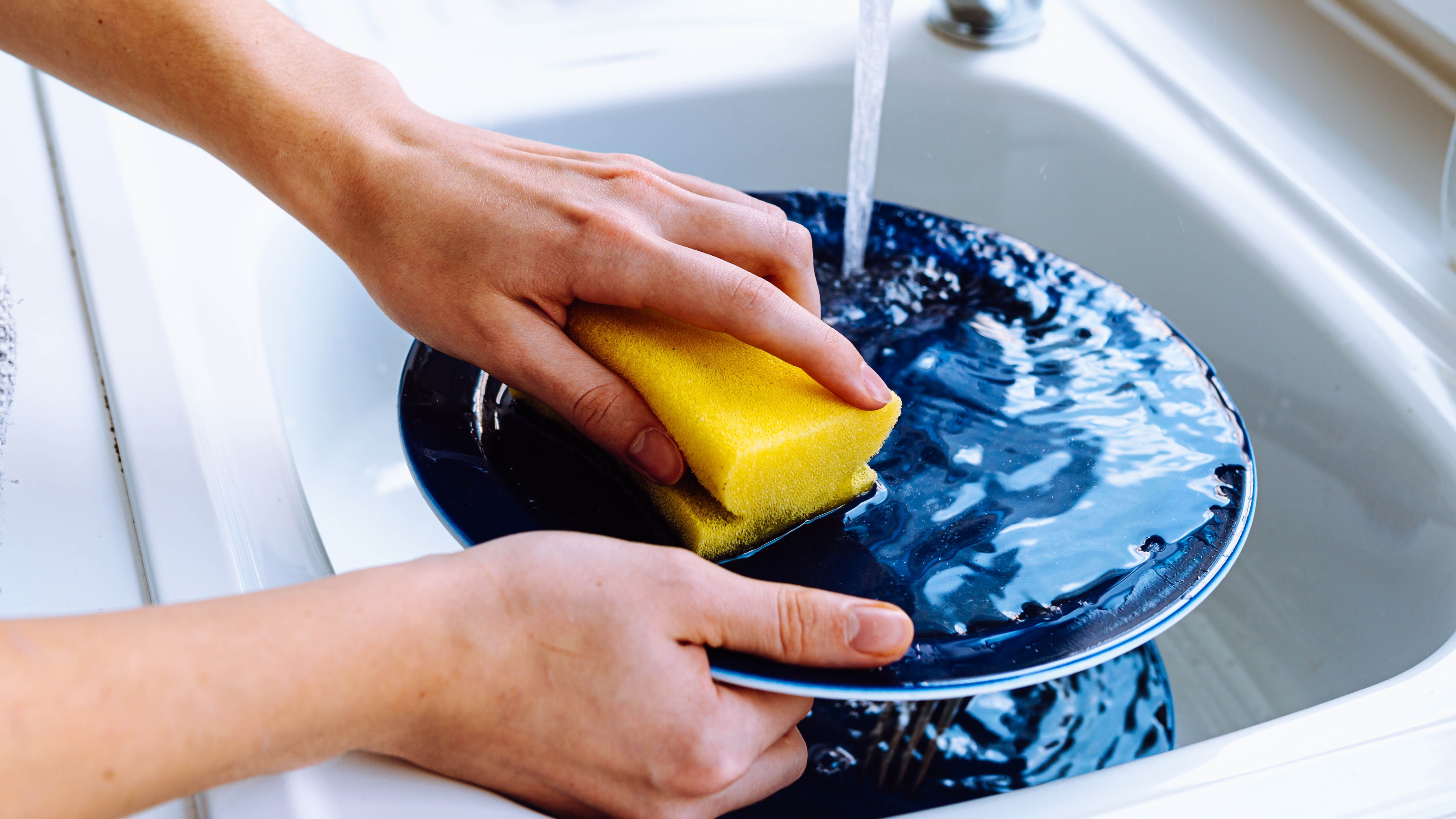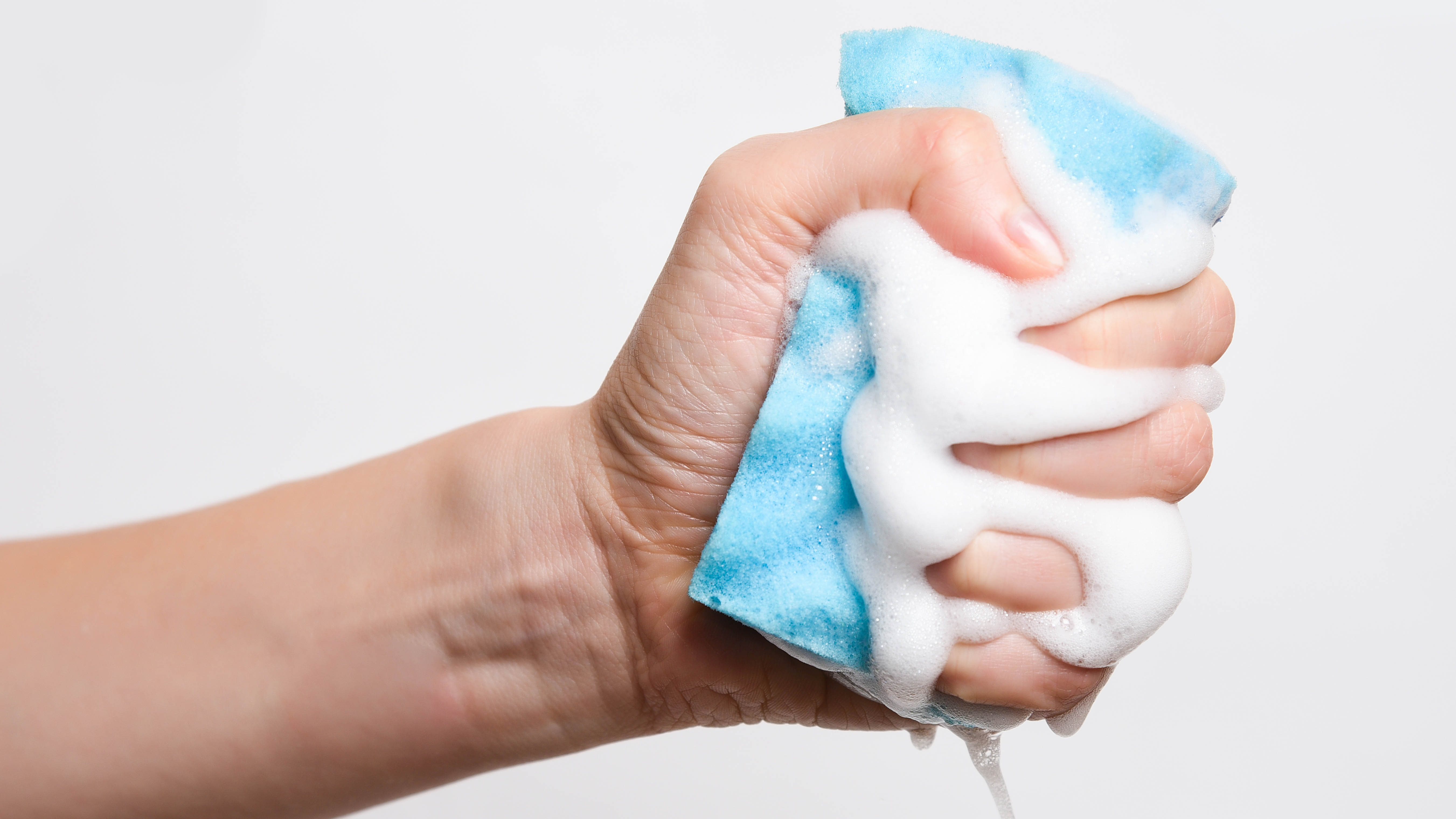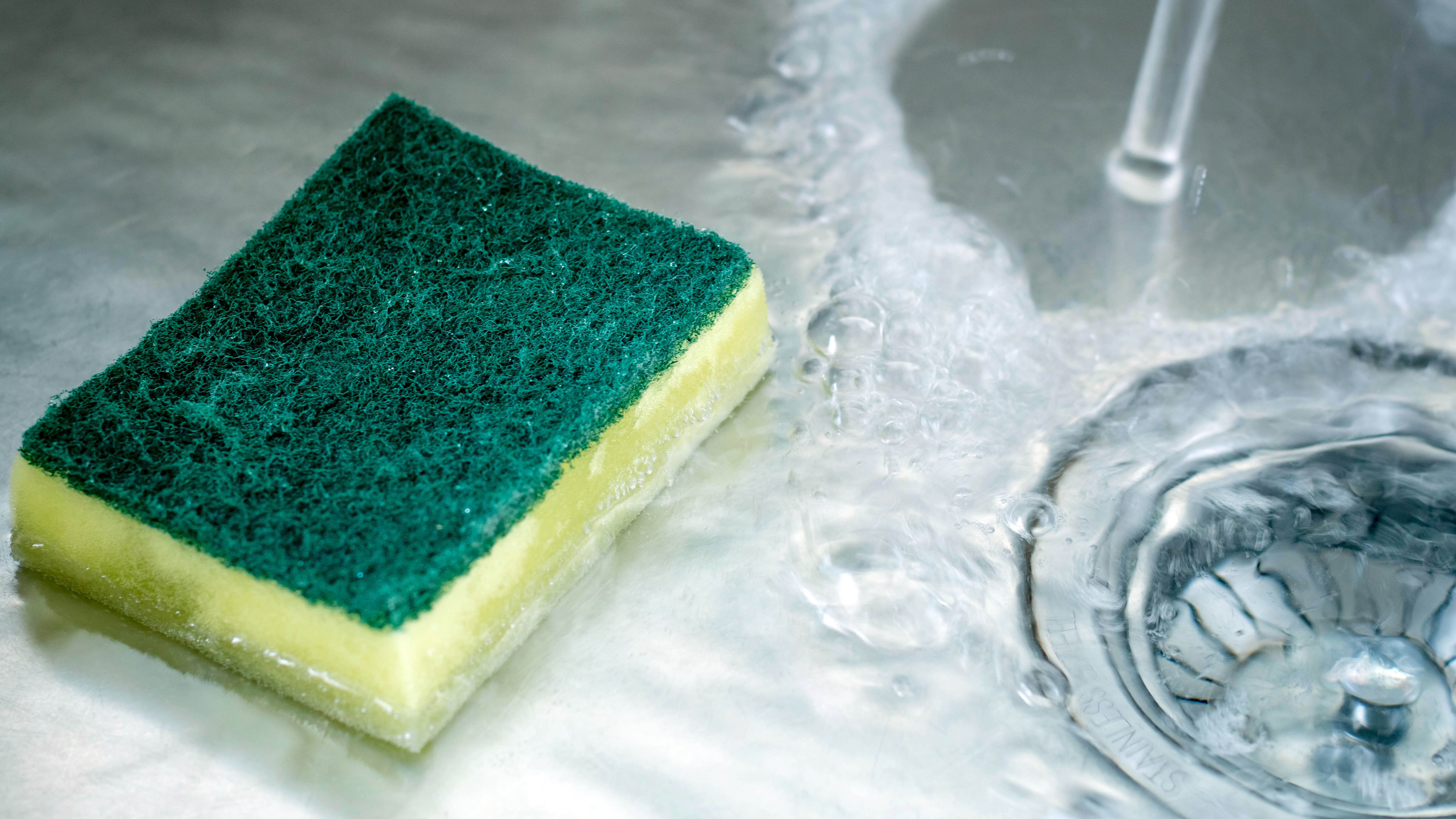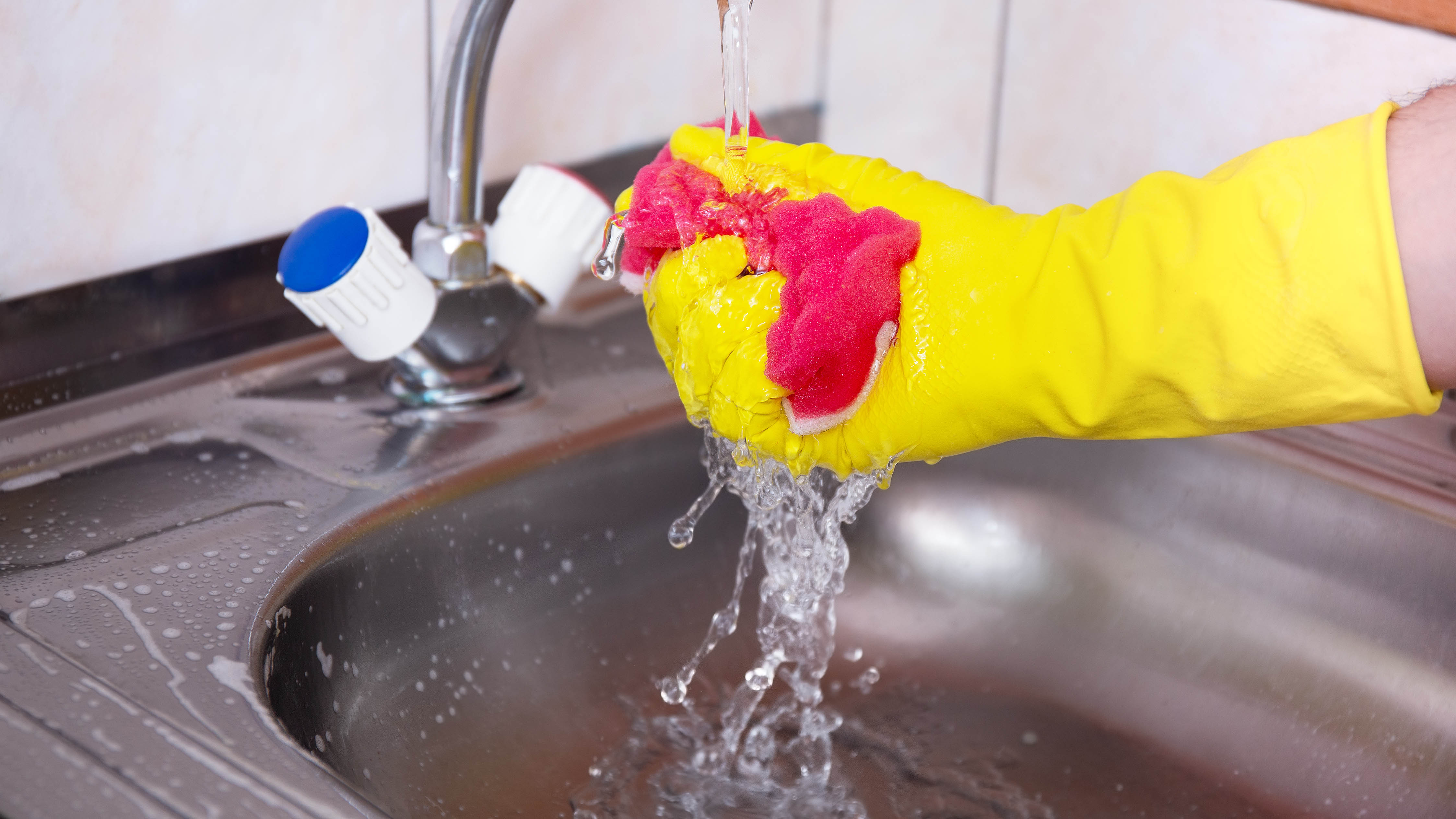5 mistakes you didn't know you were making with your kitchen sponge
These are things you should never do with your kitchen sponge

Our kitchen sponge is essential for scrubbing our dishes and making them spotless, but we often use these highly-absorbent tools to tackle other cleaning tasks around the home. And while it might seem perfectly harmless to rely on our trusty sponge, we could be causing more harm than good!
In fact, our bad habits could create a haven for bacteria growth, and defeat the purpose of having a germ-free kitchen! So if you want to make sure you get the most out of your cleaning regime, be sure to avoid these mistakes you're making with your kitchen sponge.
1. Not squeezing out the water after use

One mistake we often make is to not squeeze out excess water after use. Once you’ve finished with your dish-washing tasks, and washing away the food bits and grime, always wring the sponge out completely.
Soggy sponges are the perfect breeding ground for bacteria to grow in, and your sponge will dry quicker and last longer if it’s properly wrung out. Plus, nobody likes picking up a soaked sponge before cleaning anything!
2. Leaving it in the sink

Similarly, avoid throwing a kitchen sponge in the sink after use — only to sit there for hours. Not only will this absorb bacteria or grime left in the sink, but won’t dry out properly.
Rather than storing in the sink, it’s best to buy a sponge holder or caddy that is designed to drain excess water, promote air circulation and keep your kitchen sponge dry and clean. You can even buy racks to attach onto your sink like this 3-in-1 Sponge Holder for Kitchen Sink ($8, Amazon), that is rust resistant.
These storage caddies are also an easy way to keep your kitchen sink area organized, and clutter-free
Sign up to get the BEST of Tom's Guide direct to your inbox.
Get instant access to breaking news, the hottest reviews, great deals and helpful tips.
3. Using your sponge to clean everything

Another common mistake is to use your kitchen sponge to clean absolutely everything. Be it giving the countertops a quick wipe, cleaning the stainless steel sink or scrubbing away at burnt-on food on your oven hob, our sponges have become a convenient, multipurpose tool.
However, you could be transferring or spreading germs around your kitchen as a result — especially, if you don’t clean your sponges! Instead, use a microfiber cloth for general cleaning, or allocated scrubbers for tackling heavy-duty grime, rather than using the same sponge. What’s more, cloths like these Amazon Basics Microfiber Cleaning Cloths ($9, Amazon), are washable, non-abrasive and reusable for any task.
In addition, never use it to clean up food spills. Whether you’re cooking or prepping meat, it can be automatic to reach out for the sponge to quickly mop up food spillages or meat juices/oils. But cleaning up spills with a sponge can contaminate surfaces — increasing the risk of spreading harmful bacteria and foodborne pathogens.
Instead, use disposable, paper towels to absorb spillages and messes, which is way more hygienic than a sponge coated in raw meat juices.
4. You don’t clean your sponge often enough

We often forget that even our cleaning tools need cleaning — especially our kitchen sponge. It isn’t any wonder then why the kitchen sponge was named Number one of the dirtiest things in your kitchen — and full of bacteria species. This is because sponges are highly porous and always damp, which is the perfect breeding ground for e-coli, micro-organisms and other nasties.
So always be sure to clean thoroughly after each use, or sterilize with diluted bleach. If you don't want to use bleach however, you can soak the sponge in full-strength vinegar for 5 minutes before rinsing thoroughly with warm water. Always ensure these are completely dry before using.
5. Keeping your kitchen sponge for way too long

How long have you had your kitchen sponge for? If you can’t remember, then it's time to throw it out and replace it with a new one. Not only does an old sponge harbor bacteria, but will degrade over time and become ineffective.
Ideally, the CDC recommends replacing your sponge every two weeks, but some experts suggest you swap out your sponge on a weekly basis. However, you can base this on your cleaning habits, how often you use it, and the condition of the sponge to decide.
More from Tom's Guide

As the Homes Content Editor, Cynthia Lawrence covers all things homes, interior decorating, and garden-related. She has a wealth of editorial experience testing the latest, ‘must-have’ home appliances, writing buying guides and the handy ‘how to’ features.
Her work has been published in various titles including, T3, Top Ten Reviews, Ideal Home, Real Homes, Livingetc. and House Beautiful, amongst many.
With a rather unhealthy obsession for all things homes and interiors, she also has an interior design blog for style inspiration and savvy storage solutions (get rid of that clutter!). When she’s not testing cool products, she’ll be searching online for more decor ideas to spruce up her family home or looking for a great bargain!
